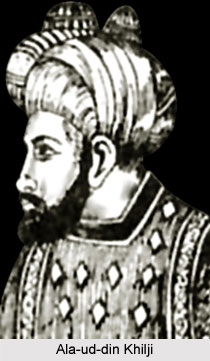 Yadavas of Devagiri came into prominence in the last quarter of the twelfth century. They established an independent kingdom after the decline of the Chalukyas of Kalyani and also conquered a large portion of South India. This dynasty was founded by Bhillama Yadava. Yadavas belonged to the Kshatriya clan. However, after the Epic Age, the Chandravanshi Kshatriyas had left Mathura and its neighbouring areas and moved to South. They established their rule in Maharashtra. Devagiri was the ancient name for Daulatabad that is part of the Deccan region.
Yadavas of Devagiri came into prominence in the last quarter of the twelfth century. They established an independent kingdom after the decline of the Chalukyas of Kalyani and also conquered a large portion of South India. This dynasty was founded by Bhillama Yadava. Yadavas belonged to the Kshatriya clan. However, after the Epic Age, the Chandravanshi Kshatriyas had left Mathura and its neighbouring areas and moved to South. They established their rule in Maharashtra. Devagiri was the ancient name for Daulatabad that is part of the Deccan region.
The prominent rulers of this dynasty follow below:
Bhillama V
Billama V was known as a powerful man of this dynasty. He ascended the throne in 1185 AD and conquered the north portions of Krishna River and declared himself as an independent king. He made Devagiri his capital. He wanted to increase the magnitude of his power by annexing the territories of Hoysala and Silharas of Karad. Bhillama was finally defeated and killed the Hoysala king, Ballala.
Jaitugi I
Jaitugi I succeeded Bhillama as the ruler of Devagiri. He had fought against Pandya`s of Nolambavadi. During his reign the struggle between the Yadavas and the Kakatiyas began. Jaitugi killed king Rudradeva of Trikaling in a terrible war.
Singhana II
Jaitugi was succeeded by his son Singhana II. He was the most powerful ruler of Yadava dynasty. After defeating Hoyasala king, Ballala, he occupied a large portion of his kingdom which included the area near south of Krishna river, Malapabha. He was also a patron of education and learning. Famous contemporary scholars were part of his court and literary discussion among scholars was a regular feature. The author of `Sangeet Ratnakar`, Sarangadhara was a prominent scholar of his court. Singhana himself wrote a commentary on his book.
Krishna
Singhana II was succeeded by his grandson, Krishna, who is also known as Kannara. He is credited with the conquests of Malwa, Gujarat, Konkan. He was a follower of Brahmanism and was a lover of education and literature. It was during his reign that Kashmiri Pandit Jalhana wrote `Sukti-Muktavali`. Another scholar Amalanand wrote commentary on Vachasapati Misra`s book `Bhamati` called `Vedanta Kalpatarn`.
Mahadeva
After Krishna`s death, his brother Mahadeva ascended the throne. He attacked North Konkan and defeated Someshwara and incorporated his kingdom into his own. He is also credited with the conquests against Karnat and Lata kings. Mahadeva was a patron of education and learning. His court was adorned by a famous scholar, Hemadra, who wrote several religious books.
Ramachandra Yadava
Mahadeva passed the throne to his son Ammana, but the latter was deposed by Krishna`s son Ramachandra who captured the invincible port of Devagiri easily. Ramachandra fought against the Malwa king but it is not known that who was victorious. His general, Saulava Tinkama, attacked Hoyasala king, Marasimha III and captured Dwarasamudra.
During the reign of Ramchandra, Devagiri was attacked by Ala-ud-din Khilji. Ramachandra was not prepared and was therefore forced to request for a treaty with the Muslim invader; thus accepting the suzerainty of Khilji.
Shankerdeva
Ramchandra was succeeded by his son, Shankardeva. He was the last ruler of Yadava dynasty in Devagiri. When Malika Kafura Devagiri, Shankardeva was defeated and killed in the battle. Harapaladeva, the son-in-law of Ramachandra, tried to rule as an independent ruler but was defeated and killed by the contemporary Muslim ruler Mubaraka. The city was renamed Daulatabad when it was annexed under the reign of the Delhi Sultanate. Thus by the later half of 1318 AD, the Yadava dynasty of Devagiri witnessed its complete downfall.
Rule of Yadavas in Devagiri is significant culturally. The scholars who were patronized by the kings of this dynasty wrote several valuable books. Moreover, a new style was developed for building of temples, which contributed to the development of future art in India.






































